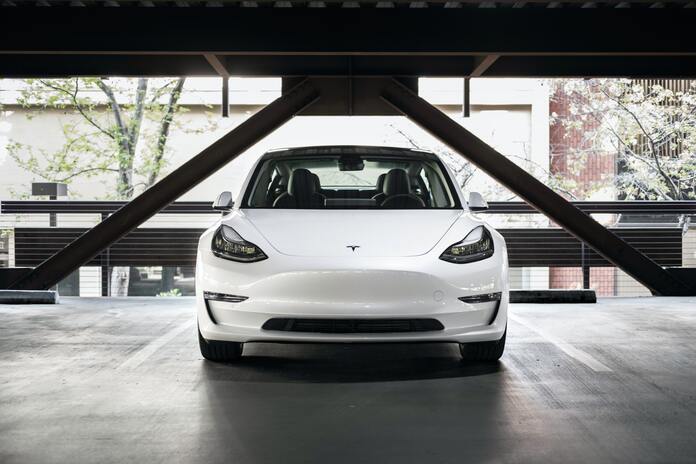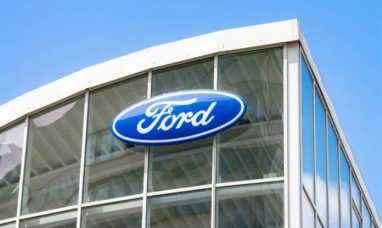Tesla Stock (NASDAQ:TSLA)
When Tesla (NASDAQ:TSLA) decided to lower the price of the Model 3 and Y earlier this year, Tesla stock fell precipitously, with shares occasionally trading as low as $100 per share. Despite the fact that TSLA stock has now partially recovered, the electric vehicle manufacturer’s valuation is still approximately 55% below its all-time high as fears of competition and price cuts continue to weigh on investor mood.
Nonetheless, investors probably misunderstand Tesla management’s justification for price reductions. In my opinion, Tesla’s aggressive price reductions are more likely a sign of the EV manufacturer’s long-term strategic ambition to seize a sizable market share in the next generation of mobility than they are a reflection of a short-term tactical response to increased competition. In other words, Tesla is getting ready to introduce electric mobility to the mass market against a backdrop of cost leadership. Better still if Tesla can eliminate some rivals in the process.
Price Drops Indicate Leadership
Electric vehicles have always been regarded as being too expensive to produce for/sell to the mass market due to their (relatively) low production numbers as well as the hefty R&D expenses to develop and advance the relatively new technology. The situation has changed, though, and after years of increasing production, Tesla has finally achieved such industrial scale and competence in building EVs that it can successfully offer them at prices that are practically on par with those of gasoline-powered cars. Tesla has likely made this decision to pass along value that has been unlocked through cost-efficiency to customers as a result.
Tesla is renowned for its efficient operations and large profit margins. The EV manufacturer was able to claim an EBITDA margin of 21% for the preceding twelve months, which is nearly 90% higher than the sector median. Similarly to this, Tesla’s net income margin is 15.4%, which is 236% higher than the sector median. Tesla has a return on total assets (TTM reference) of about 15.3%, which is higher than the sector median of 4% in terms of capital efficiency.
Without a doubt, these are some incredibly impressive profitability figures (relative to the industry). Tom Zhu, the chief of production at Tesla, has said that there may still be a lot of untapped potentials to seize chances to raise the cost-effectiveness of electric vehicles (EVs). In fact, Tesla aims to cut the company’s manufacturing footprint by 40% and the manufacturing costs per electric vehicle unit by as much as 50%. This goal is based on the creation of a new vehicle manufacturing platform known as the “New Generation Vehicle.”
The decision to lower prices appears to be a rational tactical move to take advantage of the company’s cost leadership in order to capture a larger SAM in light of Tesla’s high profitability and the prospects for a further increase in profitability.
Seeking A More Powerful SAM
Bloomberg Intelligence estimates that the market for light-duty EVs may reach 60 million units by 2040, which represents a sizable market opportunity. Of course, Tesla won’t be able to capture the majority of this market if it doesn’t cater to the mass market. This is the purpose of the price reductions.
According to me, Tesla’s price reductions are an indication that Elon Musk’s automaker is ready to dominate the market for more ‘affordable’ priced EVs. In light of that context, I’d like to highlight what Tom Zhu, the head of a production at Tesla, said at the company’s most recent investor day:
“As long as you offer a product with value at an affordable price you don’t have to worry about demand. We try everything to cut costs… and pass down that value to our customers.”
Additionally, discounting current models is a reasonable tool to begin pursuing said market opportunity until Tesla releases its mass-market-accessible Model 2, which is rumored to be priced between $25k and $30k.
Thus, it is more likely that Tesla’s lower prices will be permanent rather than just a passing trend, supporting Tesla’s goal of selling about 20 million electric vehicles annually by 2030. While Tesla’s new pricing strategy may have some unfavorable long-term effects on margins and net profitability, it is very likely to amplify scale and network effects and open up a sizable market for cross-selling post-purchase services, such as charging insurance, and software.
Valuation Provides Upside
After considering Tesla’s SAM expansion, I think the company’s 2030 goal of selling 20 million vehicles annually is reasonable. However, I reduce my average sales price per Tesla car to $52,000 and my net-profit margin assumption to 10.5% to allow for the volume expansion (pricing headwinds only partially offset by economies of scale).
I continue to believe that Tesla will be able to sell 20 cents of post-purchase revenue, such as energy services, software, and insurance, for every dollar of hardware sales (for reference, Apple generates about 30 cents worth of services for every dollar of hardware sales). I still think a 35% net profit margin for Tesla’s software division is acceptable.
On the basis of this, I have now estimated a yearly economic profit of $140.43 billion, with a present value of $966 billion. An 11% WACC, a concession back to early 2023, and the addition of $16.432 billion in net cash result in an equity value of $983 billion, or $310.61 per share.
Conclusion
There is a demand for $25k EVs on the market. Tesla also benefits from having the lowest cost to fill it. The EV story has so far gone through four conceptual stages: Initially, investors can be excited by an early promise. Second, EV manufacturers had to demonstrate that they had a technology or product. Third, businesses hurried to see if they could commercialize their technology or product using a viable business model. We are currently in the fourth phase, which calls for businesses to develop on an industrial scale and with cost efficiency. Tesla is setting the pace, just like it did for phases one, two, and three.
I think Tesla’s goal of selling 20 million vehicles annually by 2030 is reasonable; the market’s scale is the enabler, and Tesla’s cost leadership is the lever. Based on that supposition, I assign Tesla shares a target price of $310.61. I reiterate my “Buy” rating on Tesla stock.
Featured Image: Pexels @ SCREEN POST
















